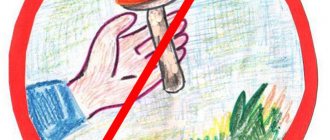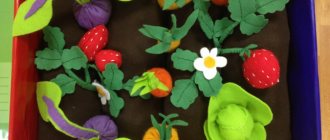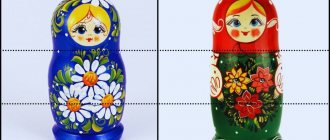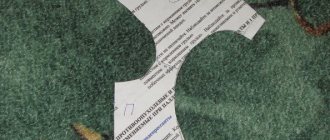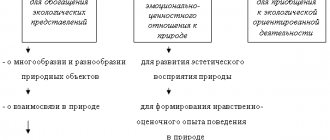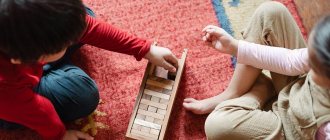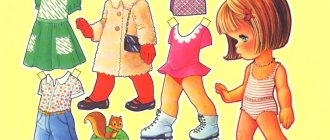Games on an interactive boardmaterial
"Games on the interactive board
on the development of speech of older preschoolers"
The inclusion of information and communication technologies (ICT) in the educational process in a preschool educational institution is one of the new and pressing problems in domestic preschool pedagogy.
In the conditions of modern development of society and production, it is impossible to imagine the world without information resources, no less significant than material, energy and labor. The modern information space requires computer skills and the ability to work on an interactive whiteboard not only in elementary school, but also in preschool childhood.
Existing educational programs provide enormous opportunities for the development of children. However, we have to admit that the methods and means used in teaching preschool children in preschool educational institutions do not realize all the possibilities inherent in them. The introduction of information and communication technologies can resolve this contradiction.
Unlike conventional technical means of education, information and communication technologies make it possible not only to saturate the child with a large amount of ready-made, strictly selected, appropriately organized knowledge, but also to develop intellectual, creative abilities, and what is very important in early childhood - the ability to independently acquire new knowledge.
Compared to traditional forms of teaching preschoolers, information and communication technologies have a number of advantages:
- presentation of information on the screen - carries a figurative type of information that is understandable to preschoolers;
— movements, sound, animation attract the child’s attention for a long time;
- problematic tasks, encouraging the child to solve them correctly with the computer itself are a stimulus for the cognitive activity of children;
— provides the opportunity to individualize training;
— in the process of his activities at the computer, near the interactive whiteboard, the preschooler gains self-confidence in the fact that he can do a lot.
The use of ICT in preschool education allows children to develop their ability to navigate the information flows of the world around them, master practical ways of working with information, and develop skills that allow them to exchange information using modern technical means.
The use of ICT allows us to move from an explanatory and illustrated method of teaching to an activity-based one, in which the child becomes an active subject, and not a passive object of pedagogical influence. This contributes to the conscious assimilation of knowledge by preschoolers, their mental and speech development.
Over the past decades, the speed of information perception has changed significantly due to the concentration of attention on the presentation of visual images. Modern children adapt well to the digital world. Children's consciousness is capable of perceiving a fairly large amount of visual information in the form of pictures, drawings, brightly designed texts, and quickly changing slides.
New information technologies make it possible to build a higher-level cognitive process based on visual (graphics, animation, text), auditory (sound, video), tactile (keyboard, interactive whiteboard) perception.
For a long time in kindergarten No. 140 “Goldilocks” G.O. In Tolyatti, work is underway to introduce information technology into the educational process of kindergarten.
Over the past three years, an interactive whiteboard (ID) has been actively used when conducting educational activities at O/O “Communication”.
During this time, enough practical material has been accumulated. It is included in the direct educational activities carried out by our kindergarten according to the program of O. S. Ushakova, E. M. Strunina “Speech development for children 5-6 years old”, “Speech development for children 6-7 years old”.
In our work, we primarily proceed from the long-term plan, topic and goals of the classes. Next, we consider the possibility of maximizing the use of interactive whiteboard data. Thoughtful preliminary work is required: drawing up didactic tasks, searching for illustrations in electronic form, making the didactic games themselves.
To optimally use an interactive whiteboard when working with preschoolers, it is necessary to follow the following methodological recommendations:
- The interactive whiteboard should be used when working with older preschoolers, subject to unconditional compliance with physiological-hygienic, ergonomic and psychological-pedagogical restrictive and permissive norms and recommendations.
- The information and didactic aids used must be adequate to the mental and psychophysiological capabilities of the child.
- The organization and methodology of conducting classes with ID corresponds to the methodology of conducting traditional classes and the basic didactic principles of preschool pedagogy. A lesson using ID includes several parts. And only one part is devoted directly to working with ID.
- When creating classes using ID, it is necessary to take into account the existing knowledge acquired in traditional classes during the implementation of the main educational program.
- ID should be a didactic tool, not an end in itself.
- It is imperative to use a traditional subject-development environment in classes with ID - toys, games, demonstration material, etc.
To solve the problem - to involve children to the maximum, the following options for organizing children in the GCD process were developed:
- A subgroup of children stands at the board, and the children take turns doing tasks on it.
- 2-3 children complete the task simultaneously at the board using a stylus (computer mouse) and markers.
- Children offer answer options to the child completing the task for the ID.
- The child independently completes the task at the ID, and the children sitting at the tables check and evaluate the correctness of completion and prove it.
- Children sitting at the tables give tasks to the child working at the ID.
- One child works at the board, the rest do the same task at the computers.
Advantages of working with an interactive whiteboard:
- Strengthens the flow of material.
- Helps the teacher to be in constant interaction with children.
- Electronic learning tools convey information faster than traditional ones.
- Allows you to increase the perception of material by increasing the amount of illustrative material.
- Develops motivation and makes activities more interesting for children.
- Children begin to understand more complex issues as a result of clearer and more dynamic presentation of the material.
Electronic didactic games for children aged 5 – 7 years on speech development.
Game "Chain"
Goal: To consolidate the ability to select words with a given sound, to highlight the first and last sound in a word.
Progress: The ID presents one picture with which you need to start the chain and several more. The teacher suggests highlighting the last sound in the word being demonstrated and choosing from among the many pictures a word that begins with this sound. Then use the stylus to move the selected picture to the first one and thus continue the chain. At the end of the task, a check emoticon opens, with a correctly composed chain of pictures underneath it. The child compares two chains.
Game “Who Lives in the House?”
Purpose: To practice explaining the meaning of words.
Progress: On the ID there are several houses with closed curtain windows. Words “live” in them (museum, snowdrop, rain, lie, competition, swimming pool, padded jacket, palace). Children are invited to go to the board, open any curtain window, read the word they got and explain its meaning (“a museum is a place where paintings are collected and people come there to look at them,” etc.)
Game "Name the Cubs"
Purpose: To practice the formation of names of young wild animals in the nominative and genitive plural cases.
Progress: The ID contains pictures of animals and their babies. The child is asked to choose one animal, find its cubs, bring them to him and say who has whom” (“The wolf has wolf cubs, the wolf has many wolf cubs.” “The hedgehog has hedgehogs, the hedgehog has many hedgehogs,” etc. ).
Game "Little Fox Counts"
Purpose: To practice the formation of genitive plural forms of inanimate nouns
Progress: On the screen there is a plot picture with a fox cub. The kids are invited to ask the little fox, who can count, questions like: “How many noses, tails, paws, eyes, eyebrows, ears, mouths, mustaches, and cheeks do you have?” The little fox answers a correctly asked question (the voice is recorded - turn on the teacher using a hyperlink), an incorrect answer - remains silent.
Game “Say it in one word.”
Purpose: To practice the formation of complex words.
Move: Words are arranged in two columns on the board (suitable words are shifted relative to each other). Children find pairs of words, connect them with a stylus or marker and make complex words from them. (Long ears - long-eared, big eyes - big-eyed, short tail - short-tailed, sharp teeth - sharp-toothed...) If the answer is correct - words of encouragement.
Game "On the contrary"
Goal: To consolidate the ability to select words that have opposite meanings
Progress: On the screen there is an object picture and a word characterizing it on a red background. From the three proposed words, the child must choose the exact opposite in meaning to the original one and transfer it to the green field. If the answer is correct, the word is transferred and encouraging words are given such as: “This is the correct answer,” “You answered correctly,” etc. If the answer is incorrect, the word is crossed out with a red cross. There are 10 sheets in the game.
Game "Choose words-relatives."
Goal: learn to select words with the same root, practice reading words, develop attention.
Progress: There are two pictures on the board depicting a forest and a river and a group of words.
Two children, working on ID at the same time, use a colored marker to connect words with the same root and the corresponding picture. After correct execution, the emoticons in the picture begin to jump.
Game "Who is attentive?"
Goal: To consolidate the ability to determine the presence of a sound in a word (“k”, “r”, “l”, “m”), to pronounce clearly highlighting a certain sound in a word.
Progress: There are several pictures on the board, you need to determine which sound is found in all the words and select it by clicking with the stylus. The correct answer - only the correct sound will remain on the screen and the inscription will appear - “well done”, “clever girl”, “correct”, etc. Wrong choice - the letter denoting this sound is crossed out.
Game "Snowflakes"
Goal: To practice selecting words - definitions for animate and inanimate objects, to activate the dictionary.
Progress: There are elements of snowflakes on the board, in the central part there is an object picture (snowman, Santa Claus, gift, Christmas tree toy, Christmas tree). You need to choose definition words for it. For each word, the presenter (adult, child) moves a ray of snowflakes. Motivation - you need to come up with so many words so that the snowflake is completely formed.
Game "Settled Houses"
Goal: To consolidate the ability to isolate given sounds in a word (“sh”), determine their location (beginning, middle, end of the word).
Progress: The teacher suggests highlighting the sound “sh” in the word, determining its location and, focusing on the diagram on the roof, moving it into the appropriate house.
Upon completion of the work, you need to move the check emoticon, behind which is the correct answer, and check yourself. Work with the sounds “s”, “zh”, “z” is carried out in a similar way.
Game "Who can you see?"
Goal: To learn to form accusative plural forms of animate nouns that coincide with the genitive.
Move: There are three pictures on the board (on two sheets - 6 pictures), covered with curtains (forest, sea, desert, north, mountains, field). All children close their eyes. The child must open one curtain, see what is shown and close the curtain back. Then he tells the children who can be seen there (“you can see wolves, foxes, wild boars, lynxes, hares, etc. there. What is it:”). The guys must guess and answer (“This is a forest”). The child leader opens the curtain and demonstrates the answer.
Game: “Riddles - descriptions”
Purpose: To practice writing a short descriptive story, highlighting characteristic features.
Move: Hidden on the board under the “curtains” are winter-themed pictures (bullfinch, Christmas tree, sleigh, gifts, ice cube, mittens). One child is called, the others close their eyes. At this time, the child at the board is asked to open one curtain, look at the picture, and close it again. Then come up with and ask the children a riddle-description. The children guess. If correct, the child opens the curtain and demonstrates the answer.
Game "What's extra?"
Goal: To exercise the ability to construct complex sentences, develop speech-reasoning, and prove your point of view.
Progress: there are three pictures on the ID. Children are asked to think about which object is superfluous here and explain why. The child selects a picture and clicks on it with the stylus (if the answer is correct, it will be crossed out, if incorrect, then not). The child explains why he made this choice (“There is an extra picture of a pig here, because this domestic animal has no horns and does not give milk, but cows and goats have horns and can give milk,” etc.).
Game “Match a Pair and Explain”
Goal: To exercise the ability to select a pair by analogy and explain your choice, to develop speech-reasoning.
Progress: The teacher invites the children to look at the picture and establish a connection between the first pair of pictures, and, based on this, select a picture in the second pair of the three proposed (move it to the arrow in the empty space) and explain their answer. (“The dog lives in a kennel, and the bird lives in a nest, so I will match the word “bird” with the word “nest”, etc.). If the child chooses the word correctly, it can be transferred; if he makes a mistake, the picture is crossed out with a cross and cannot be transferred. There are 4-5 tasks in the game.
Game "My, my, mine, mine"
Goal: To learn to focus on the endings of words when determining the gender of nouns.
Progress: Children are invited to look at the pictures and sort them into four groups, depending on what word can be substituted for them: mine, mine, mine, mine (“my hare, my sleigh, my fox, my cloud”, etc.). etc. children take turns going to the board and distributing pictures. Each child’s work is evaluated. The correct answer is encouraging words - “Well done,” “Clever girl,” etc.
Game "Choose the word"
Goal: To consolidate the ability to coordinate adjectives with nouns in different cases.
Progress: 3 sheets of tasks are offered in turn: stream - river (male and female gender), pillow - blanket (female and middle gender), saucer and cup (among and middle gender). The child must read the words and select the picture they go to by clicking with the stylus (on the ID) or the mouse (on the computer) on the square above it. If the answer is correct, a green circle will appear. If it's wrong, it's red.
D/i "Rhymes"
Purpose: To train children in selecting words that sound similar.
How to play: On the ID in a circle there are pictures depicting words that sound similar. In the center is a tape measure. The child is asked to launch it by clicking on it with the stylus. And by the way, on the contrary, she stopped to choose a rhyme.
Game "Riddles from rabbits"
Goal: To train children in the ability to solve riddles and prove the correctness of their answer, in constructing complex sentences.
Move: Several pictures of rabbits will appear on the board. The child is asked to choose one, click on it with the stylus and listen to the riddle that the bunny will “tell” him (the recording sounds). Children guess the riddle and prove the correctness of their answer (I think (I believe) that this is ..., because (since, means) ... etc.). Next, the child opens the curtain and checks the correctness of the guess.
Game "In the Yard"
Goal: To train children to distinguish between the sounds “s” and “ts”, to pronounce words with them clearly and clearly, to highlight these sounds in words.
Move: On the board there is a picture with two fences and several pictures with animals whose names contain the sounds “s” and “ts”. Children are asked to determine the presence of one or a second sound in a word, pronounce it clearly, emphasizing this sound, and place it in their yard.
Source:
Article “Games on an interactive board for the development of speech of older preschoolers” by N.A. Erykova. in the magazine “Handbook of a senior teacher of a preschool institution” No. 5, 2014, pp. 48-55
Didactic game with ICT
In order to get to the goal you need to complete a number of tasks.-You are ready? Then let's go.
1 task “Pick up the missing piece”
. When you click on the correct shape, it moves up, when you click on the incorrect one, the shape changes color and remains in place.
-Please note that the slide contains figures of various shapes.
-Well done boys.
Kar Karych offers you the following task : “Name the square shapes”
. The figures we need increase in size, the rest disappear.
Next we have Task 3: “What looks like an oval?”
. The figures we need increase in size, and the rest disappear.
4 Task: “Name rectangular objects”
.
5 Task: “What looks like a triangle?”
.
Kopatych invites you to compare the number of pumpkins and cabbage. Choose the greater than, less than, or equal to sign. When you click on the signs «»
and
“”
the action of moving to slide 13,
“Try again”
.
If the answer is correct, you move to slide 12, “Well done!”
. Click the arrow to move to the next slide.
Kopatych invites you to compare the number of pears and eggplants and put the desired sign. Clicking signs «»
and
“”
the action of moving to slide 13,
“Try again”
.
“”
sign we go to slide 15,
“Well done!”
and move on to the next task.
8 Task: “Help Nyusha count the flowers”
. When you click on the flower, numbers from 1 to 10 appear. After completing the entire task, an arrow appears to move to the next slide.
Help Nyusha “Count the butterflies and show the number indicating their number”
.
When you click on the incorrect answers “4”
and
“6”
, the rectangles in which they are located change their color to red.
By clicking the answer “5”
, the rectangle flashes green and an arrow appears to move to the next slide.
Your next task is “Count the flowers and show the number indicating their number.”
.
When you click on the incorrect answers “5”
and
“7”
, the rectangles in which they are located change their color to red.
By clicking the answer “6”
, the rectangle flashes green and an arrow to move to the next slide appears.
Next, guys, you need to “Count the candles for the cake and show the number indicating their number.”
.
When you click on the incorrect answers “9”
and
“10”,
the rectangles in which they are located change their color to red.
By clicking the answer “8”,
the rectangle flashes green, and an arrow to move to the next slide appears.
"Turn left"
. When you click on the right arrow, the color pulses. When you click on the left one, you go to the next slide.
